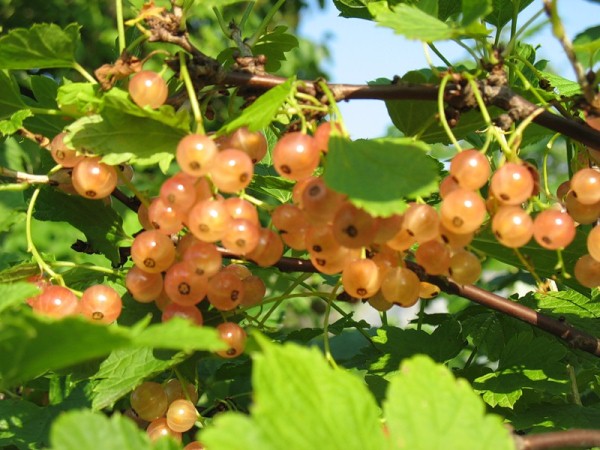Golden Currant - ornamental fruit shrub, beautiful, fruitful and unpretentious. And although it is less popular than the red or black currant, you cannot call it exotic.
Table of contents
Description of golden currant
Golden currant belongs to the Kryzhovnikov family. This is a beautiful deciduous shrub up to 3 meters. Her homeland - the south-western regions of North America, from where she came to Europe and Central Asia.In Russia, it is cultivated up to the Far East.
Currant golden has a very attractive appearance. It is a low branchy shrub with a rounded crown, fast or medium-growing shoots. Young shoots are painted red.
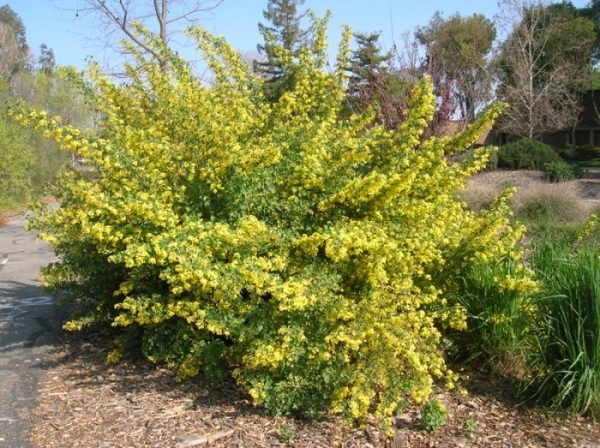
It blooms with small flowers, yellow or golden yellowcollected in brushes of 5-15 pieces, fragrant, more than a centimeter in diameter. Flowering lasts up to three weeks.
Edible berries, large, up to 8 mm in diameter, the aroma of black currant do not have, sweet-sour taste. The color of the berries is usually black or brown-purple, there are varieties with yellow-orange berries.
Beautiful glossy lobed leaves by the end of August from green become orange-red, in September they acquire a purple-carmine color and retain their decorativeness until winter.
Sorta
The most common are only a few varieties of golden currant, which also have several varieties. They differ in yield, color, size.The most popular varieties: Shafrak, Yermak, Lyaysan, Venus, Isabella, Muscat, Michurinskaya, Silver, Dwarf.
Get a plant not from hands, and in the garden centers or nurseries. Let's take a quick look at some of the most popular golden currant varieties.
Shafrak
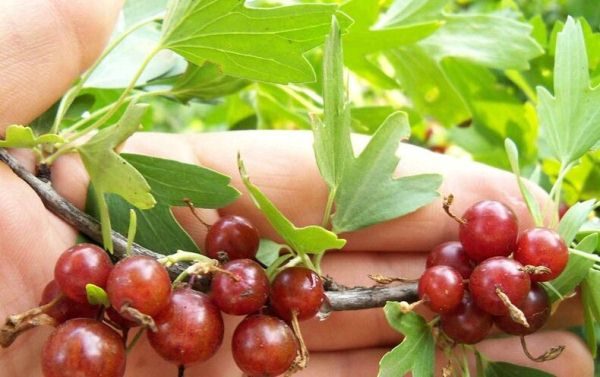
Bush average. The ripening period is medium. Berries are drop-shaped, dark red, sweet-sour, weighing 1.5-3.6 g. Yielding. Resistant to diseases and pests. Frost resistant
Ermak
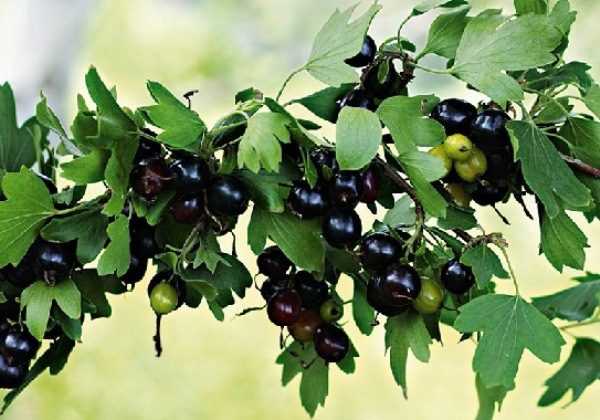
The bush is tall, dense. The ripening period is medium. The berries are round, almost black, sweet-sour, fragrant, weighing 1.0-1.5 g. Yield. Resistant to diseases and pests. Frost resistant
Laysan
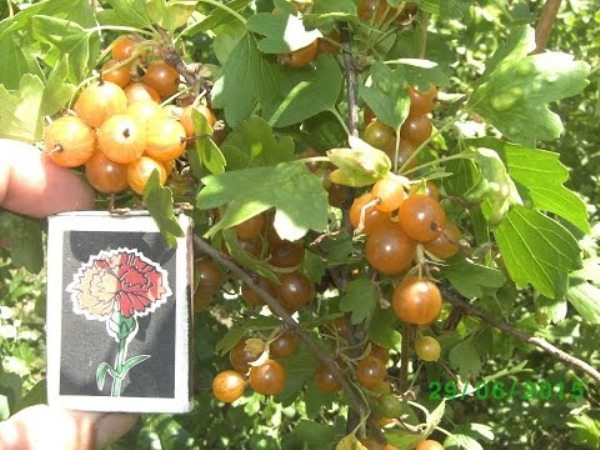
Bush high. The ripening period is medium. The berries are large, round, yellow, sweet-sour, weighing 1.0-2.6 g. Yielding. Resistant to diseases and pests. Frost resistance is average, heat-resistant. Looks good on the trunk.
Venus
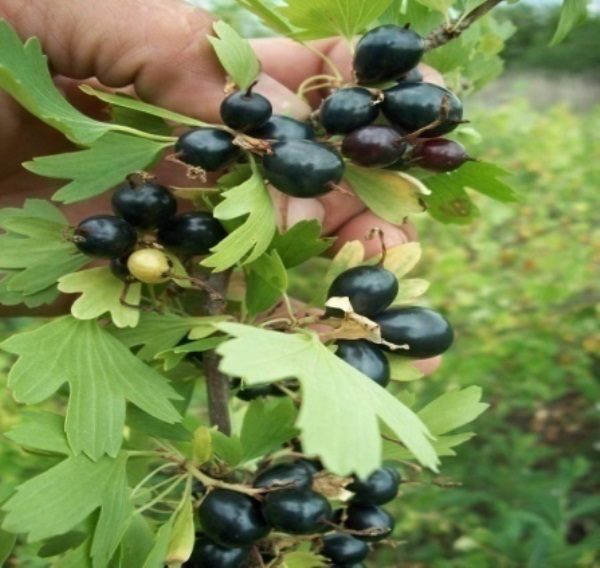
Bush high. Maturing term - early. Berries are oval, black, sweet-sour, dessert, weighing 1.5-3.2 g. Resistant to diseases and pests.It is frost-resistant, heat-resistant.
Isabel

Bush high. The ripening period is medium. The berries are round, slightly flattened, black, sweet-sour, weighing 1.5-3.0 g. Yieldy. Resistant to diseases and pests. Frost resistant
Muscat
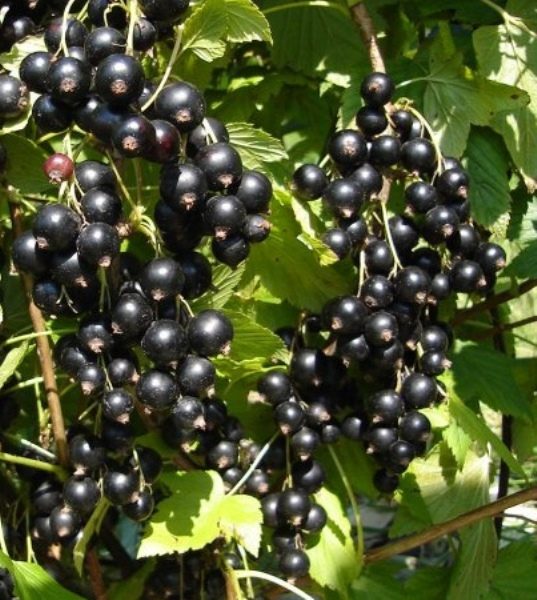
Bush vigorous, compressed. The ripening period is medium. The berries are large, round, slightly flattened, black, sweet, with a nutmeg aroma, weighing an average of 1.3 g. Very fruitful. Resistance to diseases and pests - high. Frost resistant
Features of planting and care
It is possible to care for golden currants as well as for black currants. Golden currant less demanding on irrigation and soil fertility. She can grow almost everywhere, she does not like only the wetted heavy clay soils. As already mentioned, to water the plant is not demanding, you can water it only when the weather is dry for a long time.
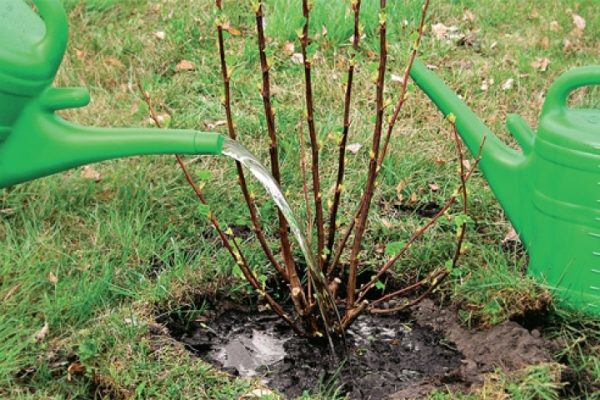
By planting golden currants on a permanent place must be approached responsibly - because in one place it will grow to 20 years. It grows well in the sun and in partial shade.
To plant the golden currant, they dig 50x50x50 holes, fill them with soil mixture from the top layer of the soil, buckets of well-rotted humus or compost, add half a cup of superphosphate and a glass of wood ash. When planting, the root neck is buried by 5-7 cm and watered abundantly. If the plant is a container plant and the branches are in good condition, then there is no need to prune them. If you bought a plant with an open root system, first soak the roots in water for no more than 2 hours (if the root system is in water for more than 2 hours, potassium will be washed out of the roots, and next year you will not have a good harvest and abundant flowering wait) After planting, cut the bush, leaving about 7 cm above the soil surface.
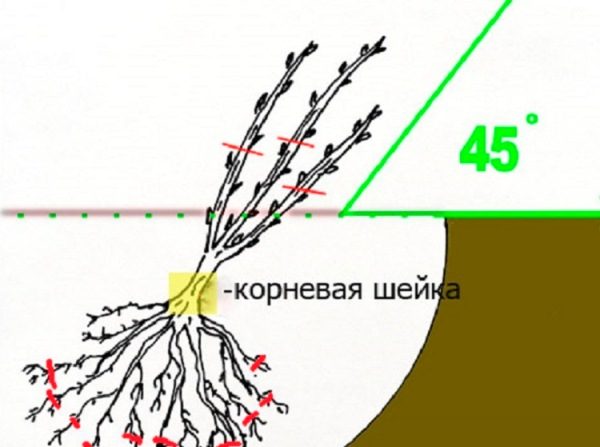
If you plant a rooted cutting, put it in the ground at an angle 45 degrees.
Further care for the plant consists in weeding, loosening, pruning, periodic watering and fertilizing. For the winter, cover the currants with a thick layer of peat or dry mullein mulch.
Golden currant is little damaged by diseases and pests.
Pruning
Golden currant branches less than black, so cut it and form a bush is much easier.
If you grow currants in ornamental culture, it is necessary to cut it according to its use, either forming a beautiful bush for landscape groups and tapeworms, or producing a continuous haircut of the required height and shape for hedges.
For the golden currant, which we keep to get berries, there are different rules for pruning.
The formation of the bush comes from the annual shoots growing annually at the base of the bush. Immediately after planting, it is necessary to cut out all the weak shoots remaining to be cut off, leaving 3-4 strong buds.

In the second year we cut out at the root all the weak, thickening annual bush shoots, leaving 4-5 of the strongest and well located, shortening them by 1/3. Re-pinch the young shoots in May, during the active growing season - this is done to increase the branching and speed up the fruiting.
Further we continue to form a bush and we make sanitary trimming - remove all weak, dried, damaged branches and shoots. Skeletal branches older than 6-7 years cut to the ground level. In an adult bush, an annual replacement of a part of old branches with young shoots should occur.
At the age of 12 You can make anti-aging pruning.
Golden currant can be formed on the trunk. Yield of standard currant will be less, it will require more care, but it will look quite decorative.
Application of golden currant
Golden currant is used as a berry and as a decorative culture.
Use as a fruit culture
We have golden currant is just beginning to be used to pick berries and is not yet a competitor for blackcurrant.
But more and more gardeners and farms are paying attention to its unpretentiousness, yield, frost and heat resistance. Moreover, in arid areas, its undemanding to irrigation is a significant plus.
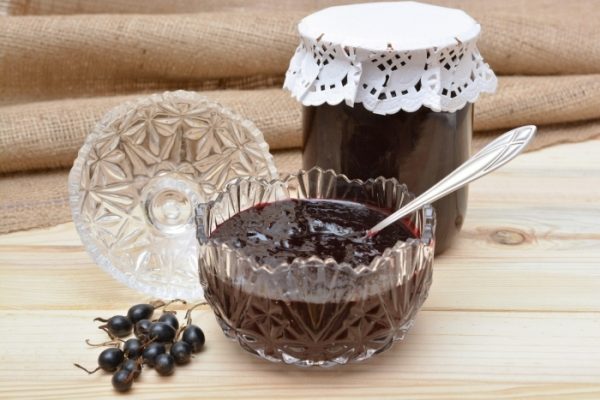
And although vitamin C in golden currant is relatively low, this is offset by its low acidity - its can be used by people with gastric and duodenal ulcers. Moreover, it contains even more carotene than apricots and sweet pepper.
It produces tasty jam, compotes, wine, and it can be frozen.
Use in landscape design
Landscape designers highly appreciated the decorative properties of the golden currant - in the spring it blooms beautifully, in the summer there are eye-catching berries on it, and in the fall it amazes with the brightness and decorativeness of the foliage.
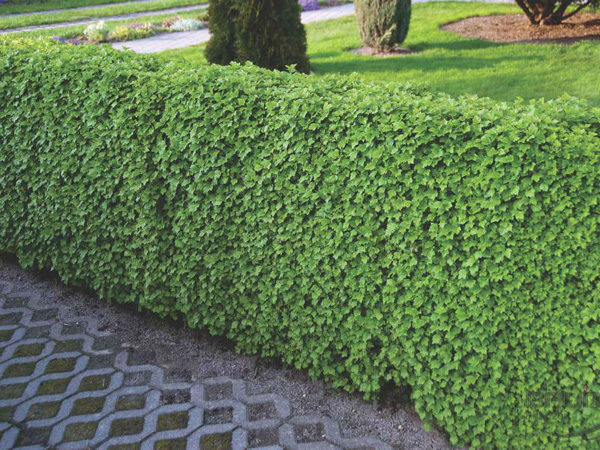
Golden currants are often used for hedges, both shorn and free-growing. It looks good in landscape groups and as a tapeworm (a single focal plant). Recently, it has become increasingly grown in standard forms.
Due to its undemanding, heat and drought tolerance, it covers the unsightly corners of the estates and gardens.
As you can see, golden currant is a universal plant. It is both beautiful and abundantly fruiting with tasty wholesome fruits, besides it is unpretentious and resistant to negative effects.. All this makes her a welcome guest on the plot.
